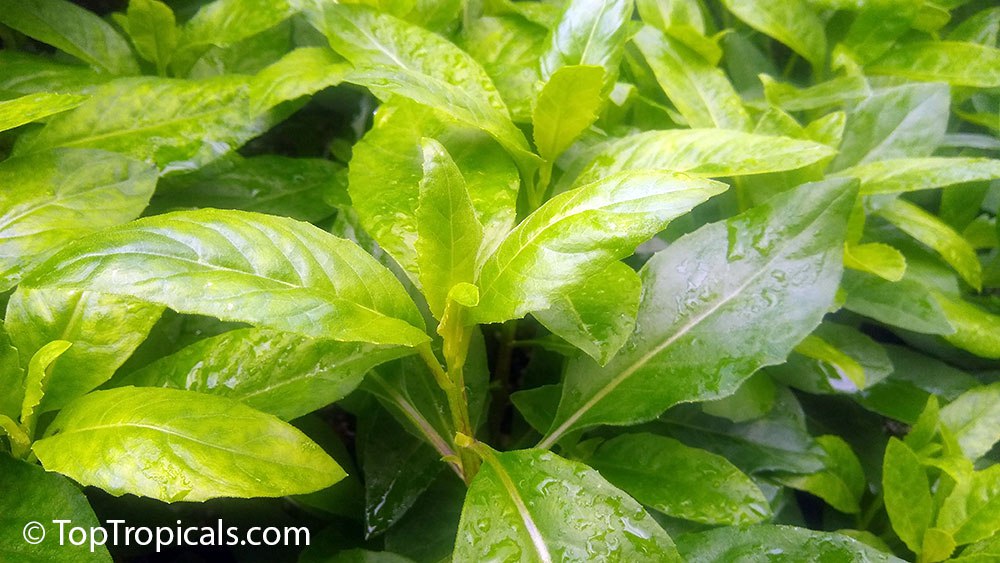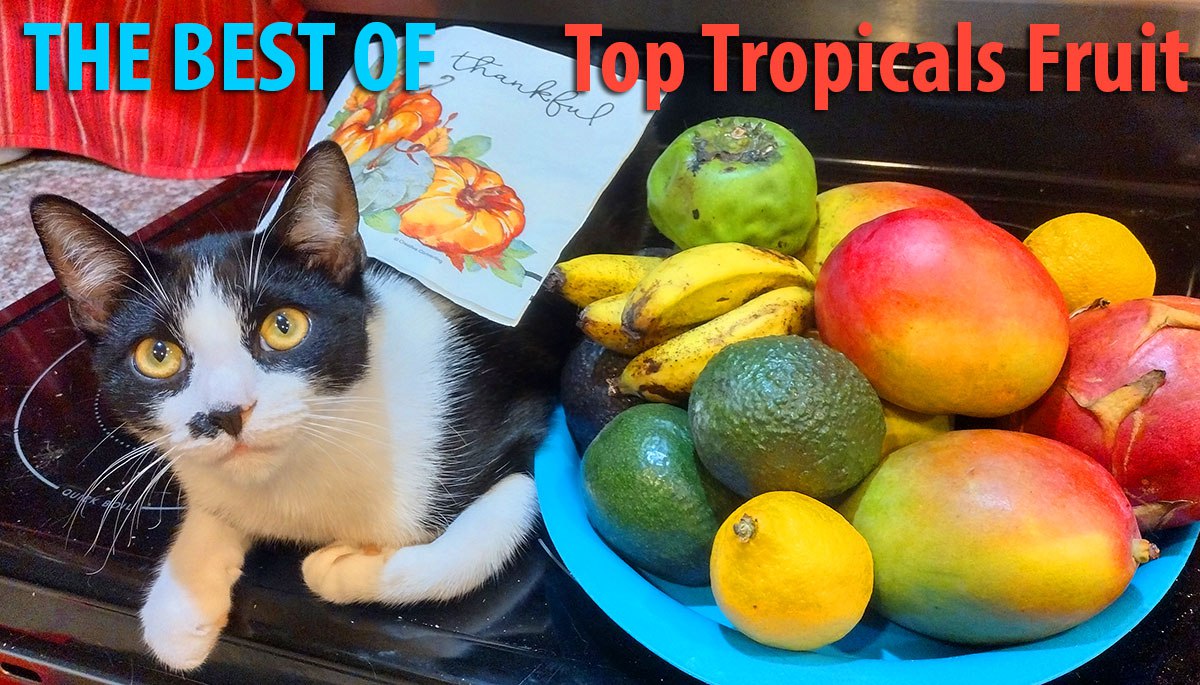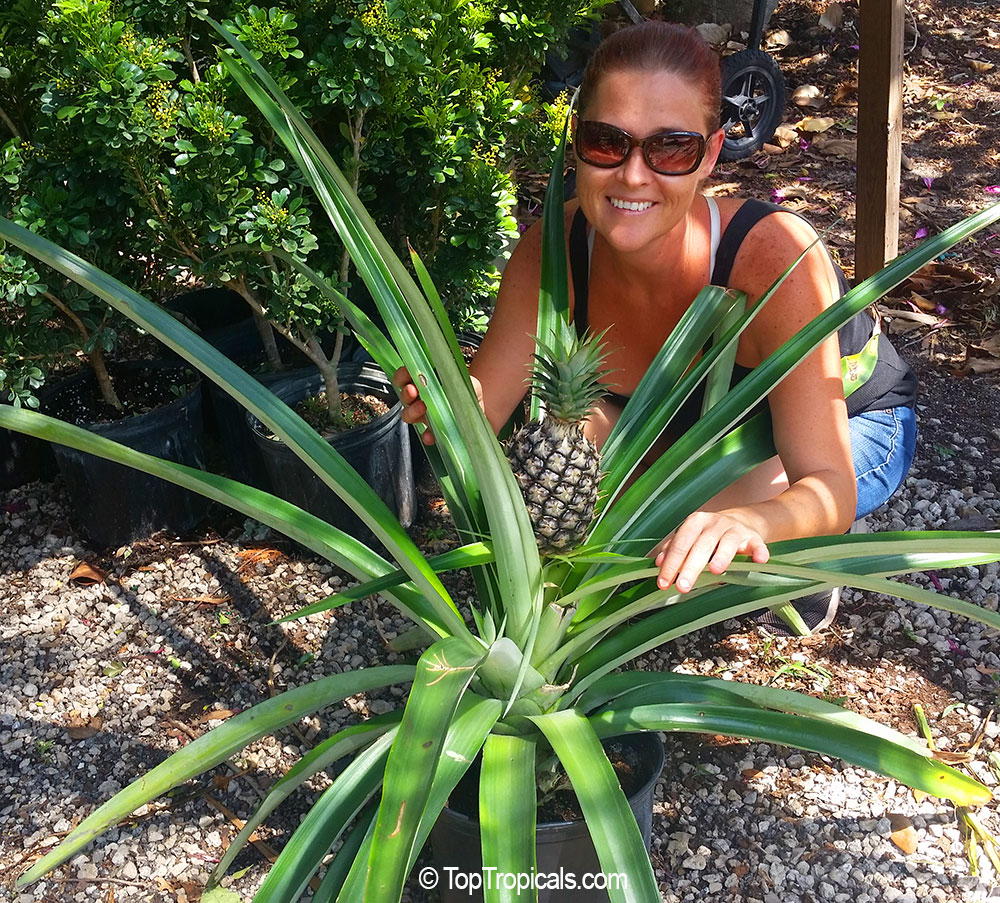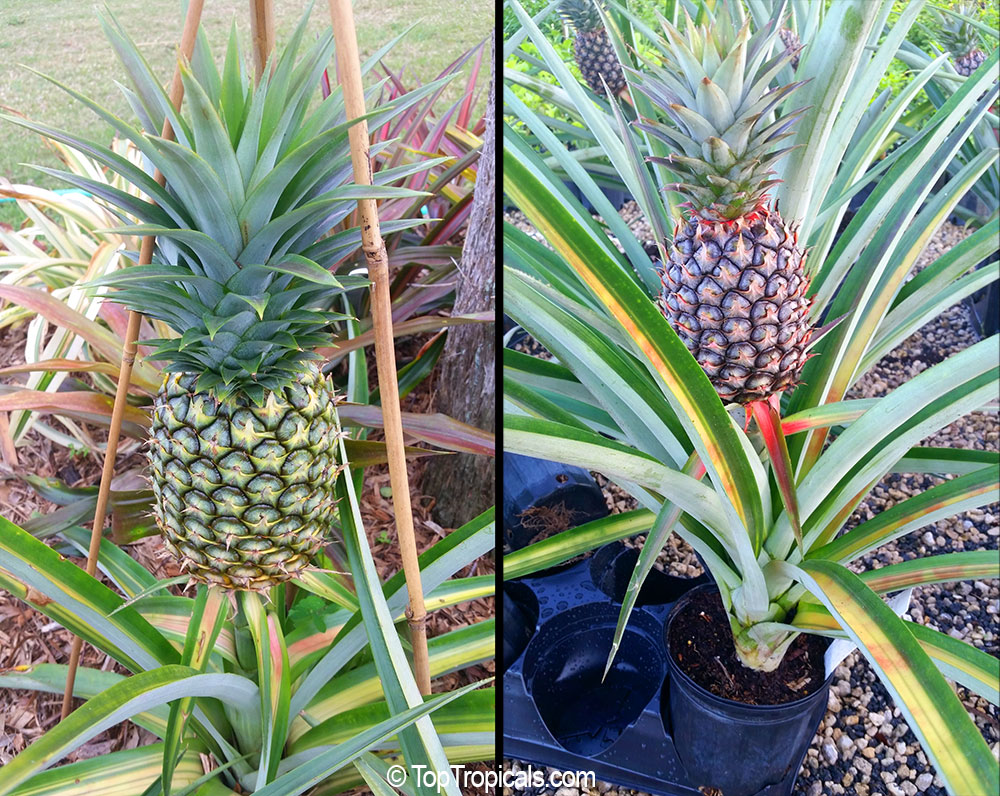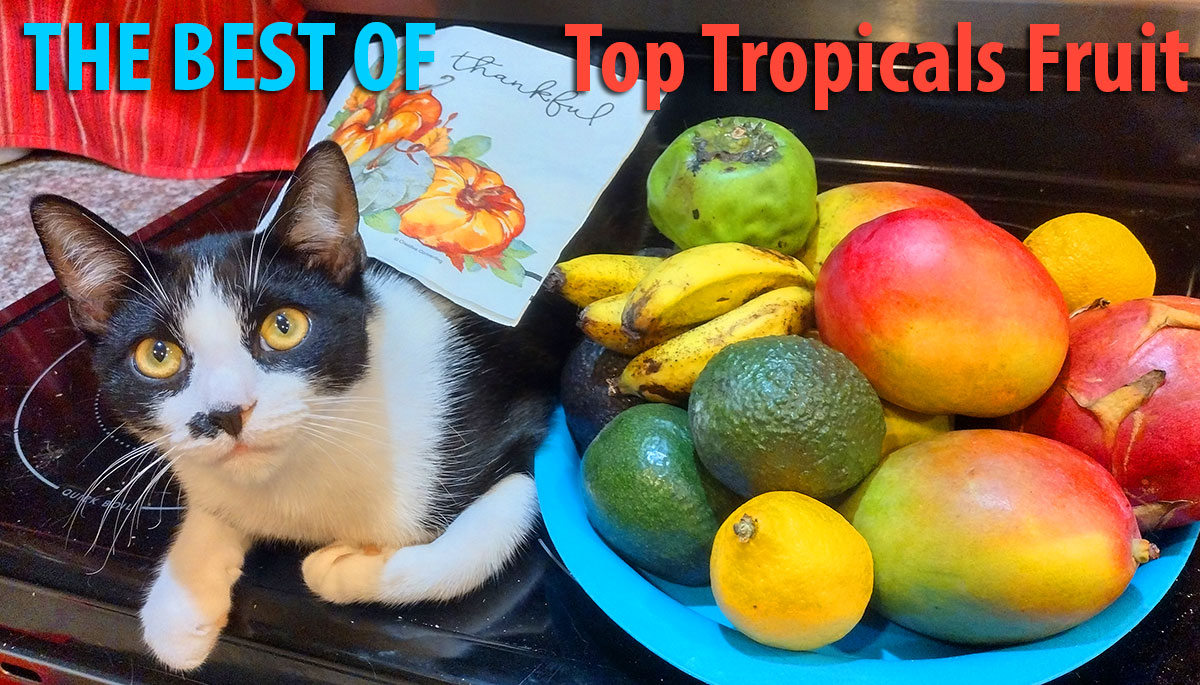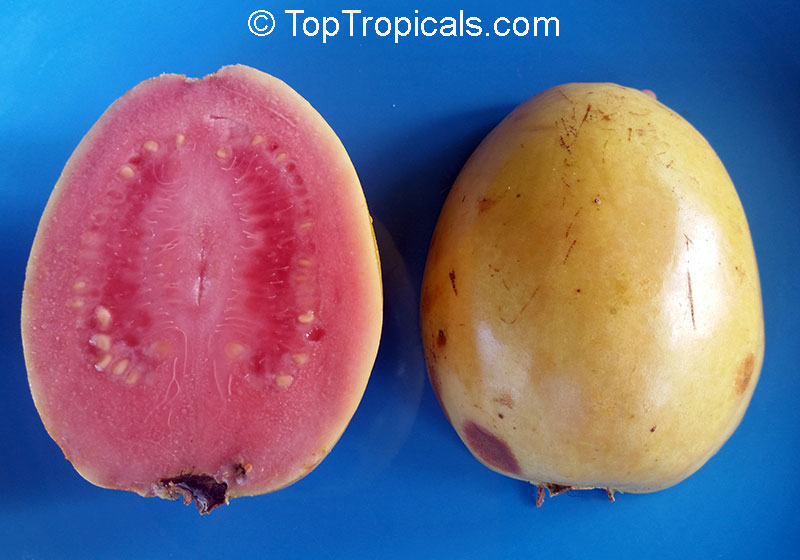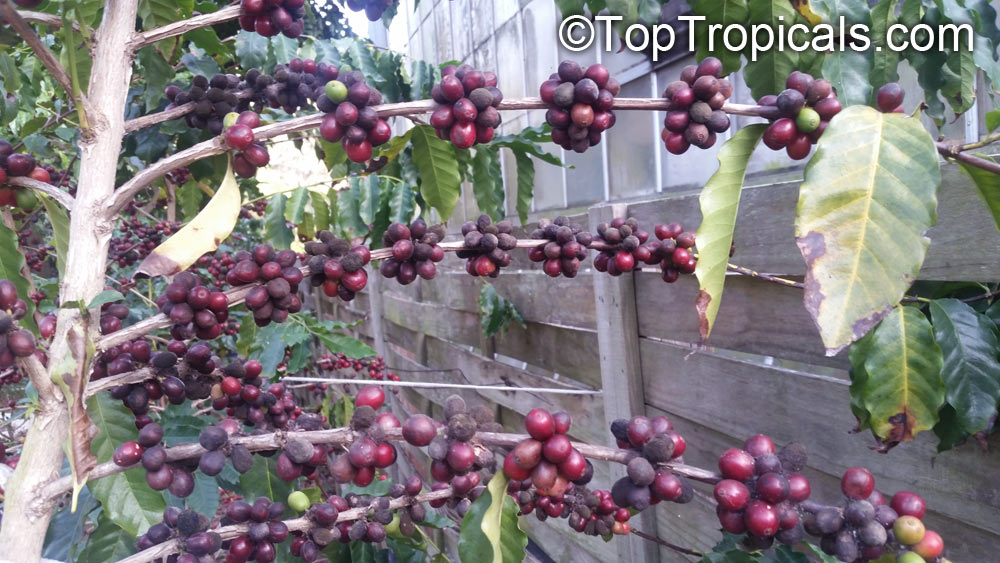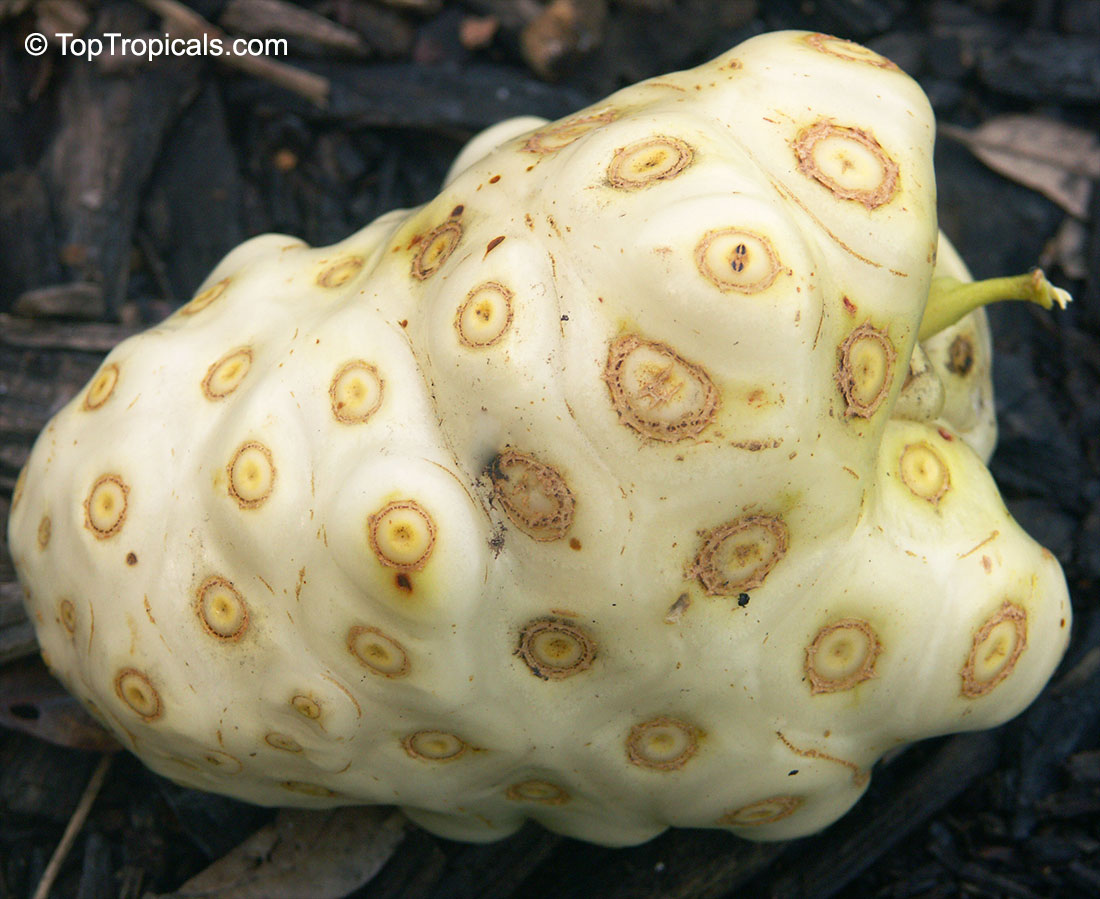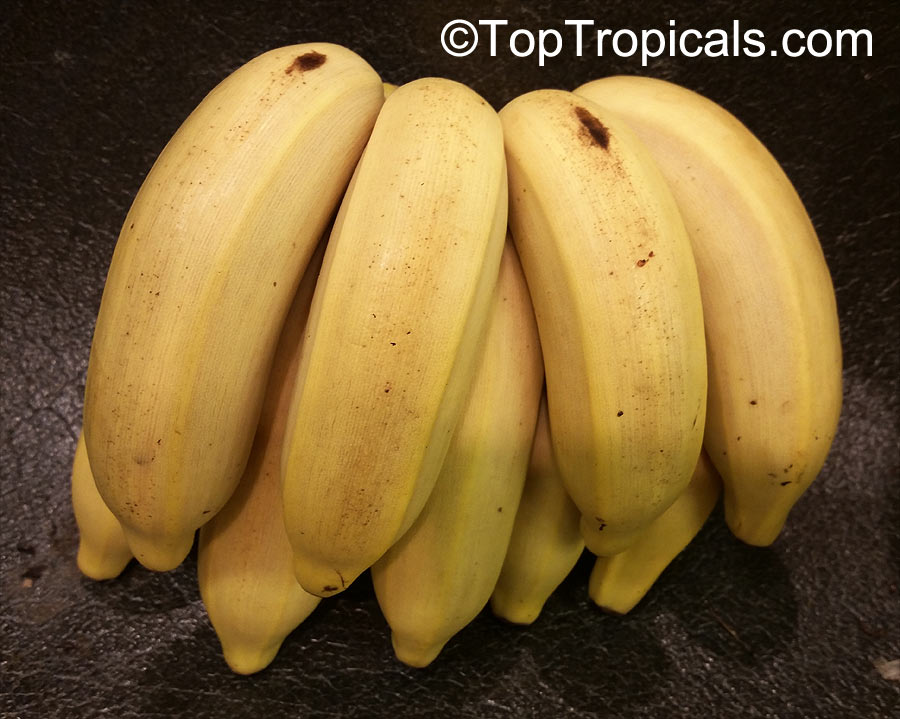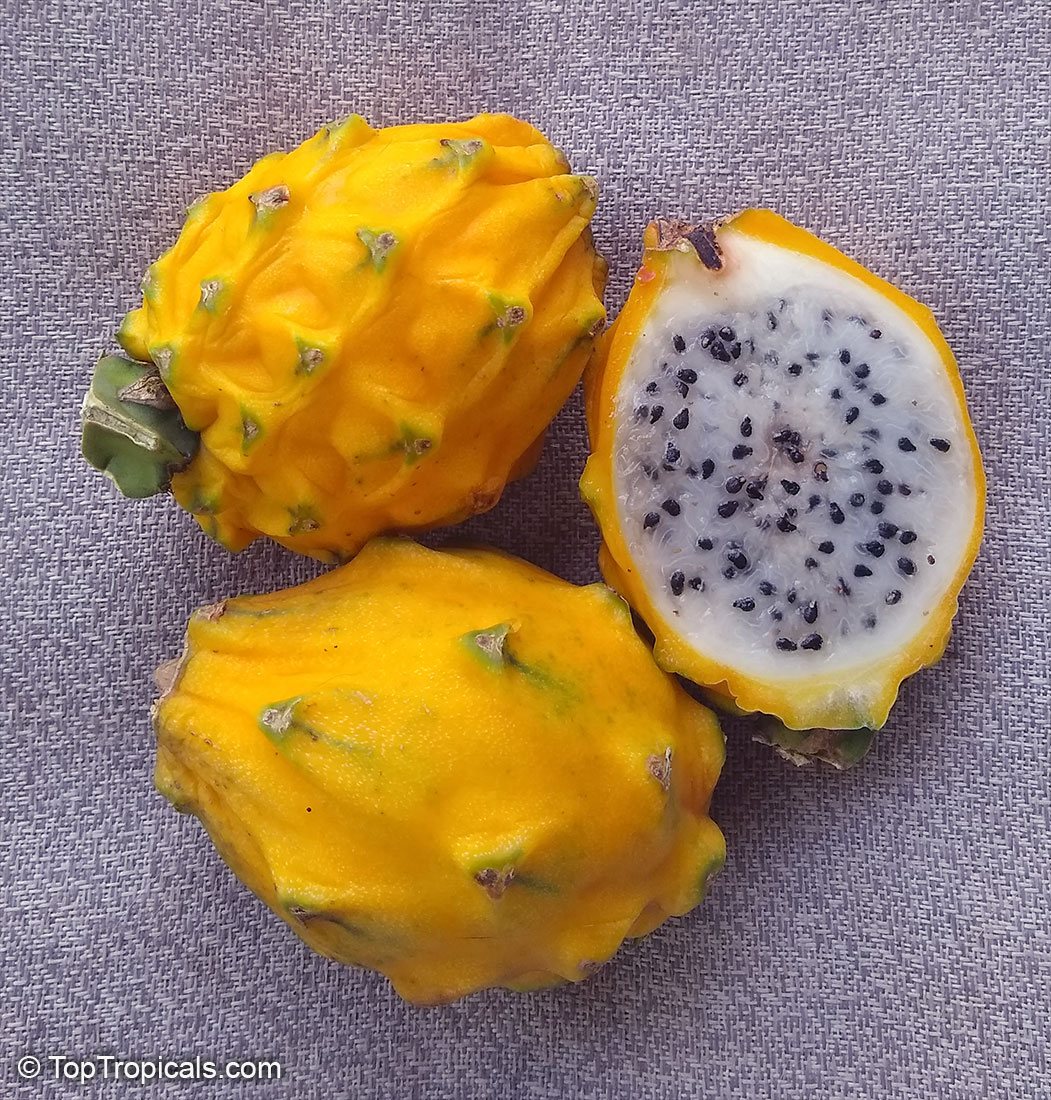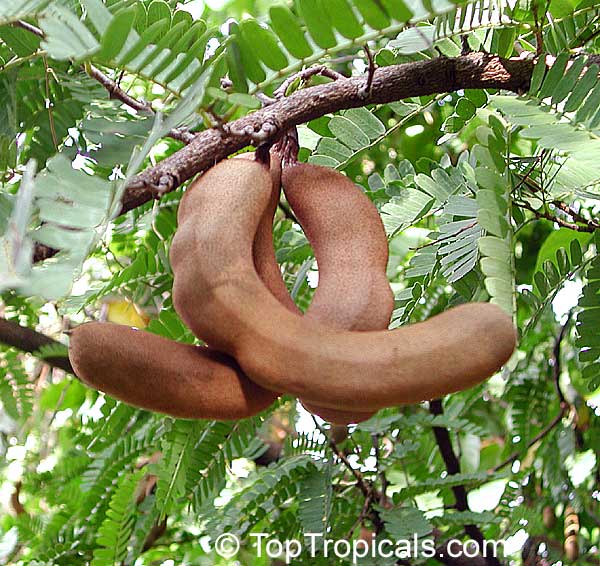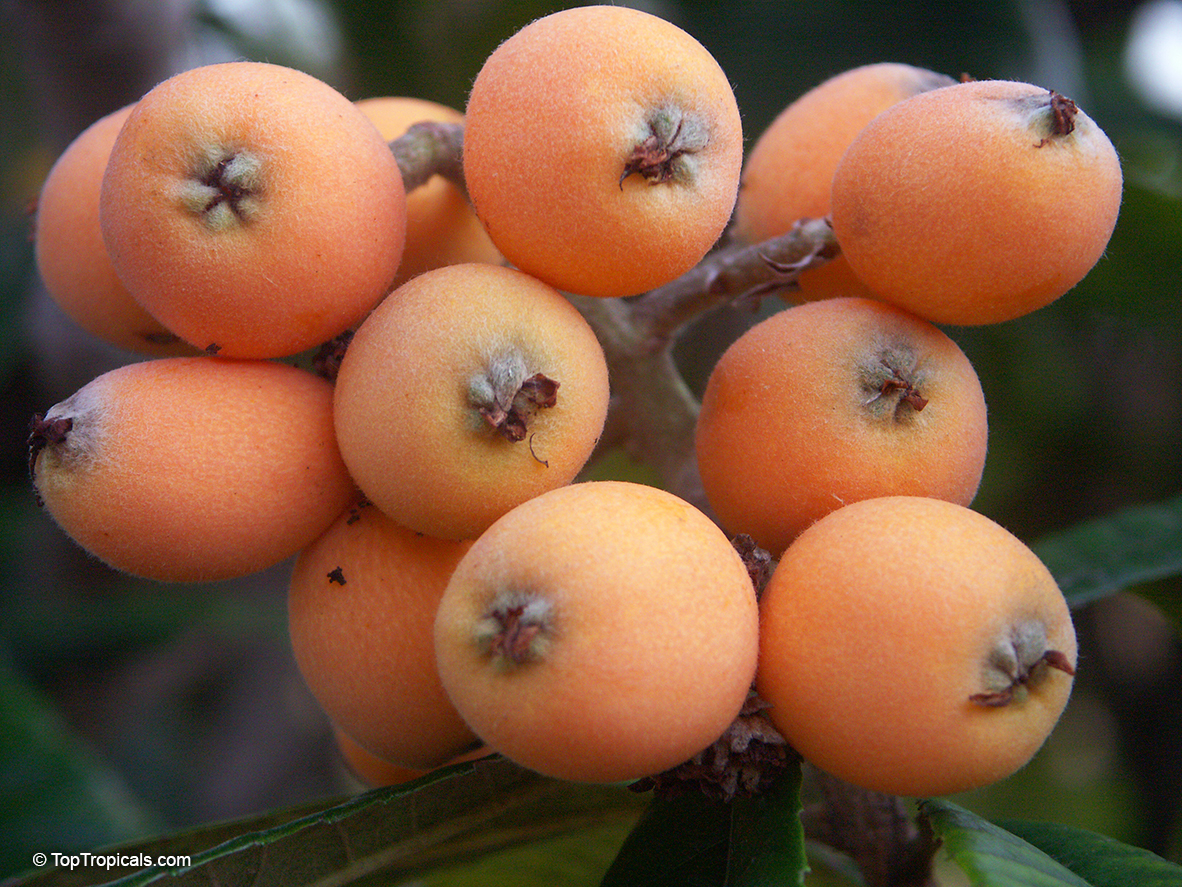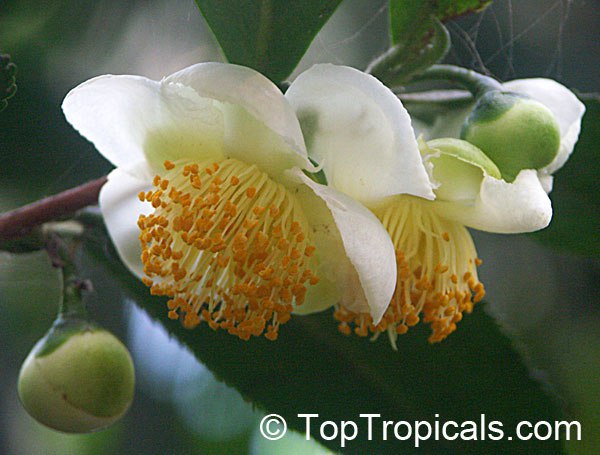Garden Blog - Top Tropicals
How to make healthy food taste delicious? Longevity Spinach Super-food Recipes
- ☘️ Gynura procubens (Longevity Spinach, Okinawa Spinach) is one of the Superfoods, known for its longevity-promoting properties in traditional medicine.
- ☘️ Native to Indonesia, commercially grown in China. It is a relatively hardy perennial that once planted, you will have these healthy greens for many years!
- ☘️ Both the stems and the leaves are edible and nutritious, can be eaten raw or cooked. They have a unique flavor with a faint hint of pine, and will add a beautiful aesthetic element to cuisine.
- ☘️ This green is also known as cholesterol spinach, and there are many claims that it lowers can cholesterol.
- ☘️ Perfect for hot and humid climates unlike traditional Spinach that only grown in cooler areas. It will thrive in any type of soil, any type of light other than dark shade, and is pest-free.
- ☘️ Very adaptable to container gardening and even grows well on a windowsill.
- ☘️ The leaves and young shoot tips can be steamed, used in stir fry, tempura, stews, and soups. Just add them at the very end.
Check out the recipes⬇️⬇️⬇️
📚 Gynura: Longevity Spinach Superfood Recipes
🎥 Best Hot Weather Spinach Crops - Longevity and Okinawa Spinach
🛒 Plant Longevity Spinach and live long
#Food_Forest #Recipes #Remedies
🏵 TopTropicals
Do you have Longevity Spinach in your garden?

Gynura crepioides - Okinawa Spinach, Purple leaves
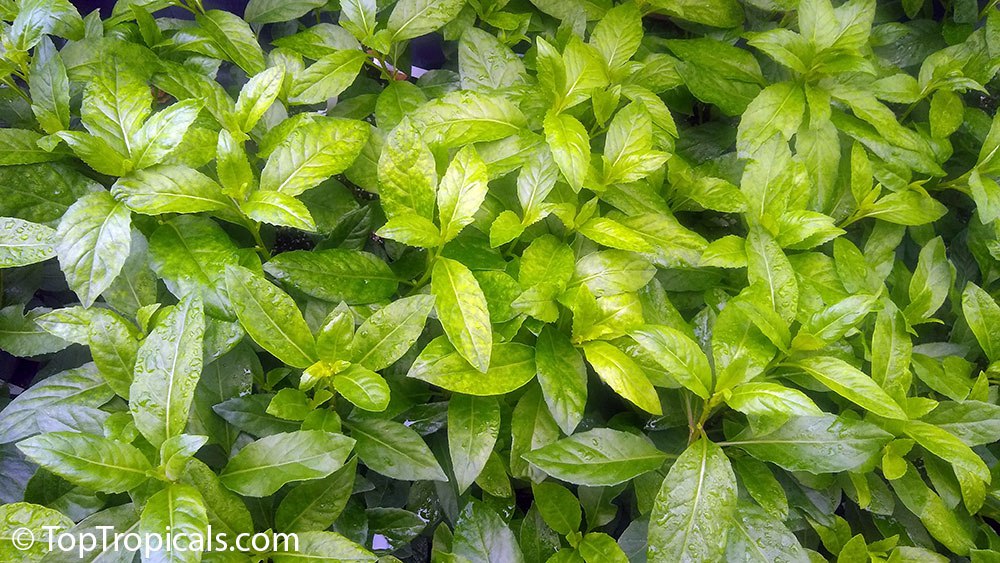
Longevity Spinach (Gynura)
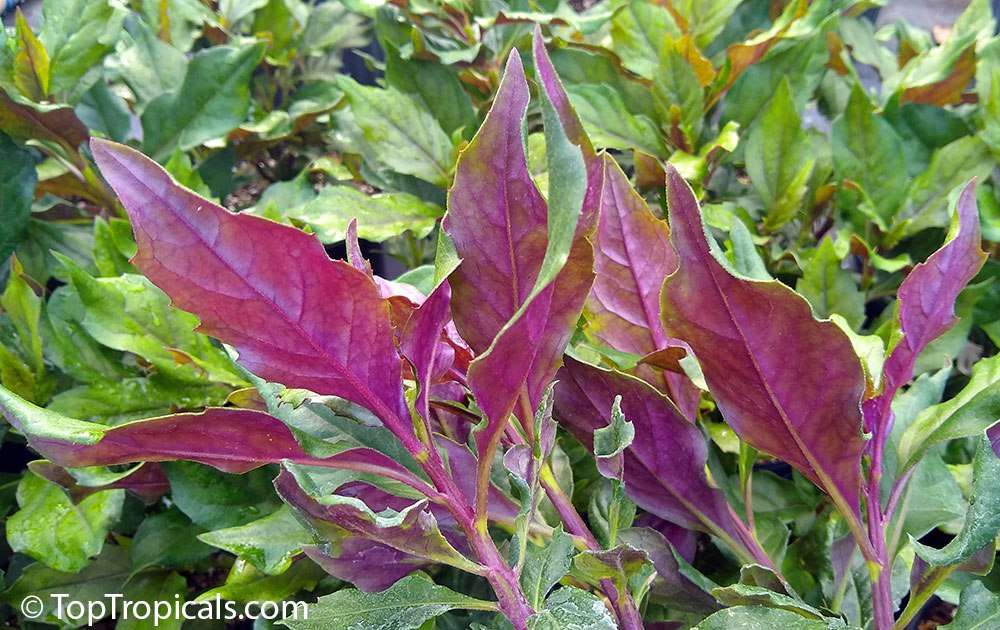
Gynura crepioides - Okinawa Spinach, Purple leaves
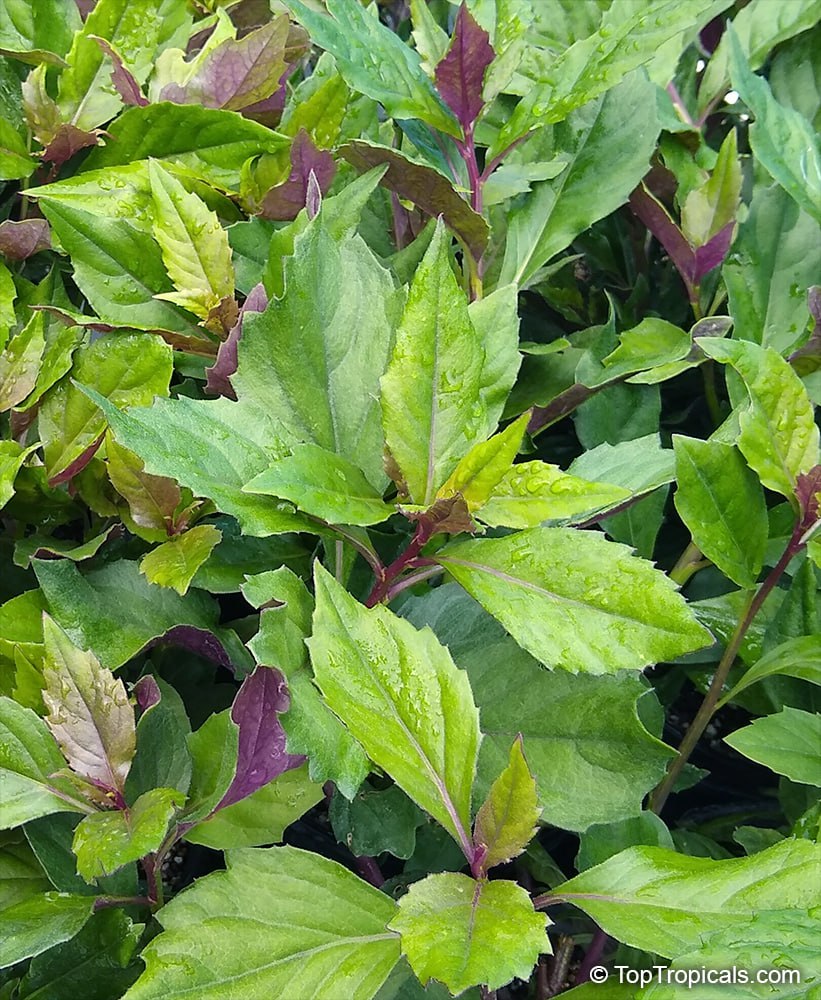
Gynura crepioides - Okinawa Spinach, Purple leaves
- Longevity Spinach (Gynura) is a leafy green plant known for its mild flavor and nutritional benefits. It is one of the Superfoods, known for its longevity-promoting properties in traditional medicine. There are two varieties - Green (Gynura procubens) and Purple leaves (Gynura crepioides - Okinawa Spinach).
- It's often used in Southeast Asian cuisine, added to soups, stews, and salads for its health-promoting properties, including immune support and improved digestion.
- It is prized for being easy to grow and rich in vitamins and antioxidants. This green is also known as cholesterol spinach, and there are many claims that it lowers can cholesterol.
- Perfect for hot and humid climates unlike traditional Spinach that only grown in cooler areas. It will thrive in any type of soil, any type of light other than dark shade, and is pest-free.
- Very adaptable to container gardening and even grows well on a windowsill.
- The leaves and young shoot tips can be steamed, used in stir fry, tempura, stews, and soups. Just add them at the very end.
Check out the recipes⬇️⬇️⬇️
📚 Learn more:
5 most useful edibles for tropical garden
How to make healthy food taste delicious: Longevity Spinach Super-food Recipes
Gynura: Longevity Spinach Superfood Recipes
🎥 Best Hot Weather Spinach Crops - Longevity and Okinawa Spinach
🛒 Plant Longevity Spinach and live long
#Food_Forest #Recipes #Remedies
🔴 Join 👉 TopTropicals
Discover top 10 fruiting plants youll ever need for your health benefits
⁉️ I planted Mango and Avocado trees, and I still have room for more trees but want to use the space wisely. What other trees should I plant to get the most benefits out of the fruit?
✅ Everyone loves planting Mango or Avocado trees for their well-known benefits. But did you know that adding a variety of other fruit trees to your garden can expand those benefits even more? If you plant just one of each of these 10 trees, you'll have a complete spectrum of nutrients and health-boosting ingredients you ever need. With a diverse range of healthy fruits, you'll boost your diet, improve your health, and elevate your lifestyle.
By planting these 10 diverse fruit trees, you’ll not only enjoy a delicious and abundant harvest but also ensure your garden provides all the nutrients needed for a healthier, more vibrant life:
1. Guava
2. Coffee
3. Noni
4. Papaya
5. Banana
6. Dragon fruit
7. Tamarind
8. Surinam Cherry
9. Nescafe
10. Loquat
⚠️ Learn more about these 10 top fruit you'll ever need for your health benefits in our following posts... Stay with us and make sure to subscribe! ⬇️
🛒 Shop fruit trees
#Food_Forest #Remedies
🔴 Join 👉 TopTropicals
Date:
Five benefits of growing your own Pineapple
Q: Can I grow my own pineapple fruit?
A: Growing a Pineapple plant - Ananas comosus - is a fun and rewarding experience that offers both visual and practical benefits:
1. Fresh, homegrown fruit: One of the main benefits of growing a pineapple plant is that you can enjoy the fruits of your labor by harvesting fresh, delicious pineapples right from your own backyard.
2. Aesthetic appeal: Pineapple plants are visually appealing with their long, spiky green leaves and bright, vibrant fruits. They can add a tropical, exotic touch to any garden or indoor space.
3. Low maintenance: Pineapple plants are relatively easy to grow and require minimal maintenance. They can tolerate a variety of soil and light conditions and don't require frequent watering or fertilization.
4. Health benefits: Pineapple fruit is rich in vitamins, minerals, and antioxidants that can provide a range of health benefits, including improved digestion, boosted immunity, and reduced inflammation. It is recommended to eat a slice of a pineapple after every meal to keep healthy digestive system.
5. Collectable varieties: The pineapple plant can be easily propagated by cutting off the top of a pineapple fruit. However, for those seeking excellent quality, it is recommended to choose superior hybrids from professional growers. Become the proud owner of "The King of Fruits" collection! It takes up minimal space and provides fresh fruit throughout the year.
Read more about Pineapple: The most luscious Hospitality Fruit - Pineapple.
Remember to add Sunshine Ananas fertilizer to your purchase for a long lasting Pineapple crop season.
Longevity Spinach Superfood Recipes: how to make healthy food delicious
Can healthy food taste delicious?
Healthy Longevity Spinach... It tastes like... spinach? You can add it to your salads, but let's face it, you can only eat so much of a salad. So try it cooked - you will be so surprised and want to eat it every day!
🍳 Eggs with Longevity Spinach
You will need:
🌿 Longevity Spinach or Okinawa Spinach: 2 handfuls
- 1 cup Bacon (optional), sliced or chopped, or: 2 tbsp Olive or vegetable oil
1 large Onion, sliced in semi-rings
1 sweet pepper, red or yellow, sliced
3-5 cloves garlic, chopped (optional, to taste)
5-6 eggs
1 cup ground beef or turkey/chicken (optional), or mushrooms
½ cup shredded cheese (regular or Parmesan)
salt and pepper to taste
🌶 Sweet Chile Sauce (optional. Tastes great with this dish!)
- 🍷 a glass of your favorite wine or cocktail to enjoy your dinner
Preparation time: 10 min
Makes dinner for 2
Open detailed recipe
🛒 Order Longevity Spinach
#Edible_Forest #Recipes
TopTropicals.com
We Grow Happiness
Date:
Benefits of growing your own tropical fruit
"The fruit of the mango tree is no longer forbidden.
Indeed, it has been recommended to me by the physicians as an antidote to the
plague."
- Louis IX, King of France -
Q: Why do you want to grow your own tropical fruit tree?
A: Growing your own tropical fruit tree can have many benefits. Here are a few reasons why someone might choose to grow their own tropical fruit tree:
1. Fresh, flavorful fruit: When you grow your own tropical fruit tree, you have access to fresh, flavorful fruit that you may not be able to find at your local grocery store. Tropical fruit, like avocado, mangoes, papayas, and passionfruit, jackfruit, Dragon Fruit, Annona have a short shelf life, and the fruit you find at the store may have been harvested weeks ago. When you grow your own fruit tree, you can pick the fruit when it's fully ripe and enjoy it at its peak flavor. Besides, some rare fruit like Akee or Sapodilla simply never offered from the store.
2. Environmental benefits: Growing your own fruit trees can have environmental benefits. Trees absorb carbon dioxide from the air and release oxygen, which can help reduce your carbon footprint. Additionally, growing your own fruit trees reduces the need to transport fruit long distances, which can help reduce greenhouse gas emissions.
3. Cost savings: Depending on where you live and the availability of tropical fruit, growing your own fruit tree can be a cost-effective way to enjoy your favorite tropical fruits.
4. Gardening and outdoor hobby: Growing a fruit tree can be a fulfilling and rewarding outdoor hobby. It can also be a great way to teach children about where their food comes from and the importance of taking care of the environment.
Overall, growing your own tropical fruit tree can be a great way to enjoy fresh, flavorful fruit, reduce your carbon footprint, save money, and enjoy a fulfilling outdoor hobby.
In the photo: Mango tree in Top Tropicals garden.
Date:
Ten
top fruiting plants you'll ever need
for your health benefits
Q: I planted Mango and Avocado trees, and I still have room for more trees but want to use the space wisely. What other trees should I plant to get the most benefits out of the fruit?
A: Everyone loves planting Mango or Avocado trees for their well-known benefits. But did you know that adding a variety of other fruit trees to your garden can expand those benefits even more? If you plant just one of each of these 10 trees, you'll have a complete spectrum of nutrients and health-boosting ingredients you ever need. With a diverse range of healthy fruits, you'll boost your diet, improve your health, and elevate your lifestyle. Let's check out the TOP TEN most rewarding and useful fruit...
1. Guava
Guava is rich in vitamin C, which boosts the immune system and helps protect
against colds and infections.
Guava helps regulate blood sugar levels, making it a good option for people
with diabetes.
Its potassium content helps maintain healthy blood pressure.
Guava's antioxidants, like lycopene and vitamin C, contribute to glowing
skin and may reduce the risk of cancer.
Guava is eaten fresh, made into juices, jams, and jellies, or added to
desserts and smoothies.
2. Coffee
Coffee is widely enjoyed as a beverage and is used in various desserts and
drinks.
It is rich in antioxidants, which may reduce inflammation and lower the
risk of chronic diseases.
It improves focus and mental alertness due to its caffeine content.
Coffee boosts metabolism and aid in fat burning, supporting weight
management.
3. Noni
Noni
is known for its anti-inflammatory properties and may help reduce joint
pain and arthritis symptoms.
Fresh noni fruit and juice are popular in traditional herbal medicine and
drinks.
It boosts the immune system due to its rich vitamin C content.
Noni juice is used traditionally to improve digestion and fight infections.
4. Papaya
Papaya is a popular ingredient in salads, smoothies, and tropical desserts.
It contains enzymes like papain that aid digestion and reduce bloating.
It is high in vitamin C and vitamin A, the antioxidants in papaya may
protect against heart disease and reduce cancer risk.
5. Banana
Bananas
are rich in potassium, which helps regulate blood pressure and supports
heart health.
They provide a quick source of energy and are great for post-workout
recovery.
The fiber in bananas aids digestion and promotes gut health.
East them fresh, add to smoothies, bake into breads and desserts, or use in
various savory dishes.
6. Dragon fruit
Dragon
fruit is often used in smoothies, fruit salads, and refreshing drinks.
It is high in fiber, aiding digestion and promoting gut health.
Low in calories and packed with nutrients, it's great for weight
management.
7. Tamarind
Tamarind is a common ingredient in sauces, chutneys, and beverages.
Rich in antioxidants, it protects the liver and reduces inflammation.
It contains natural compounds that help lower cholesterol and improve heart
health.
Tamarind has a mild laxative effect, aiding digestion and relieving
constipation.
8. Loilita (Surinam) Cherry
Surinam cherry is rich
in vitamin C, boosting the immune system and skin health.
Its antioxidants reduce inflammation and protect against free radical
damage.
It contains fiber, which supports healthy digestion.
Surinam cherries are used in jams, sauces, and desserts or eaten fresh.
9. Nescafe
Nescafe - Mucuna pruriens - is used in herbal supplements or ground into powder for teas and health drinks.
It is known for its potential to boost dopamine levels, improving mood and reducing stress.
It supports cognitive function, muscle growth and increases energy levels.
10. Loquat
Loquat are very popular and are eaten fresh or used in making jams, jellies, pies, and fruit salads.
Loquat is rich in vitamin A, supporting eye health.
It contains antioxidants that help fight inflammation and reduce the risk of chronic diseases.
The fiber in loquats aids digestion and helps maintain healthy blood sugar levels.
By planting these 10 diverse fruit trees, you'll not only enjoy a delicious and abundant harvest but also ensure your garden provides all the nutrients needed for a healthier, more vibrant life.
Where does the tea come from?
- 🍃 Camellia sinensis - Tea Leaf. Yes, tea comes from a camellia!
- 🍃 Tea Leaf is a small evergreen tree, usually pruned back to shrubs in cultivation.
- 🍃 In the fall and winter, the plant will produce small white flowers with a lovely fragrance.
- 🍃 Tea is the second most commonly drank liquid on earth after water. It has numerous medicinal benefits mainly due to its antibacterial and antioxidant properties.
- 🍃 To grow Tea Leaf Plant, make sure to pick an area of your landscape where it does not flood or remain wet during our rainy season. Camellia sinensis do not like wet feet at all. They prefer well-drained, sandy and slightly acidic soil.
📚 Learn more: Tea Leaf Plant and Tea Harvesting Recipes
🛒 Shop Tea Leaf Plant
#Food_Forest #Recipes
🏵 TopTropicals
Date:
The Benefits of Companion Planting
Q: What is companion planting?
A: Companion planting is a gardening technique that involves planting different crops or types of plants together in a way that benefits all plants. This practice has been used for centuries, and it can be especially useful in tropical gardens where there is a diversity of plant life: trees, shrubs, vines and climbers, ground covers, fruit and edibles, and different flowering ornamentals. It is a great way to improve the health and yield of fruit tree crops while reducing the need for fertilizers and pesticides. By choosing the right companion plants and planning your garden layout carefully, you can create a vibrant and diverse ecosystem that will benefit both your plants and the environment.
Companion planting involves:
Planting different crops together to repel insects: adding such plants as Lemon grass, Patchouli leaf, or Moujean Tea near your vegetables can deter aphids and other pests.
Attracting pollinators - Butterfly plants. Many tropical crops, such as passion fruit, papaya, mango, and avocado, rely on pollinators to produce fruit. Companion planting can help to attract pollinators such as bees, butterflies, and hummingbirds to your garden.
Providing nutrients to the soil, adding mulch and low growing plants (ground covers) to preserve moisture.
Planting a variety of different types of plants together in order to create a more resilient ecosystem that is less susceptible to pests and diseases.
To get started, plan your garden layout and choose companion plants with
similar water and light requirements.
For example, plant in the same group lush foliage plants, gingers, and flowering brunfelsias in shady areas; plant jasmines and gardenias in full sun and very well-drained spots.
Rotate annual crops regularly and experiment with combinations to find what
works best. By doing this, you can create a thriving ecosystem that benefits
both your plants and the environment, reducing the need for harmful
chemicals.
How to make Nescafe from Mucuna beans
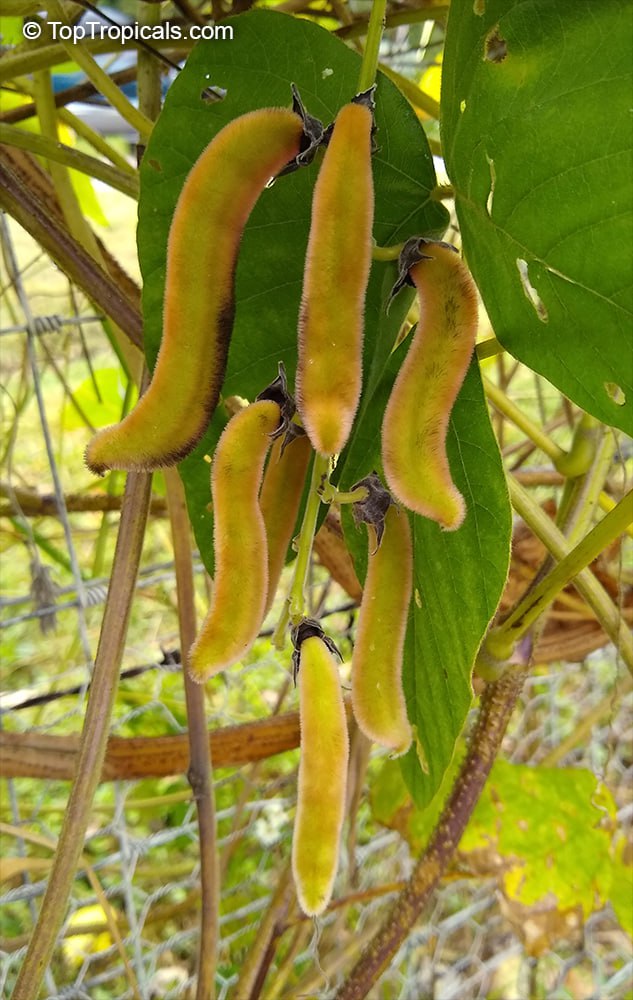
Mucuna pruriens, Velvet Bean, Purple Jade Vine - beans
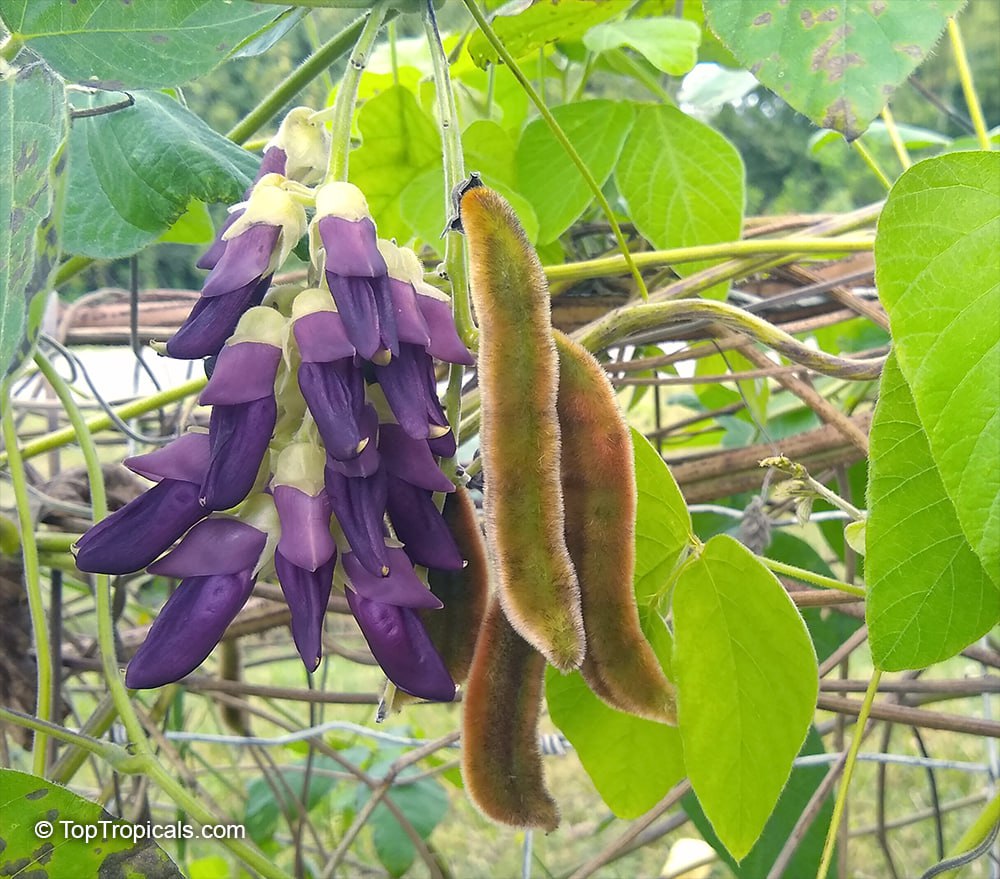
Mucuna pruriens, Velvet Bean, Purple Jade Vine - beans, flowers
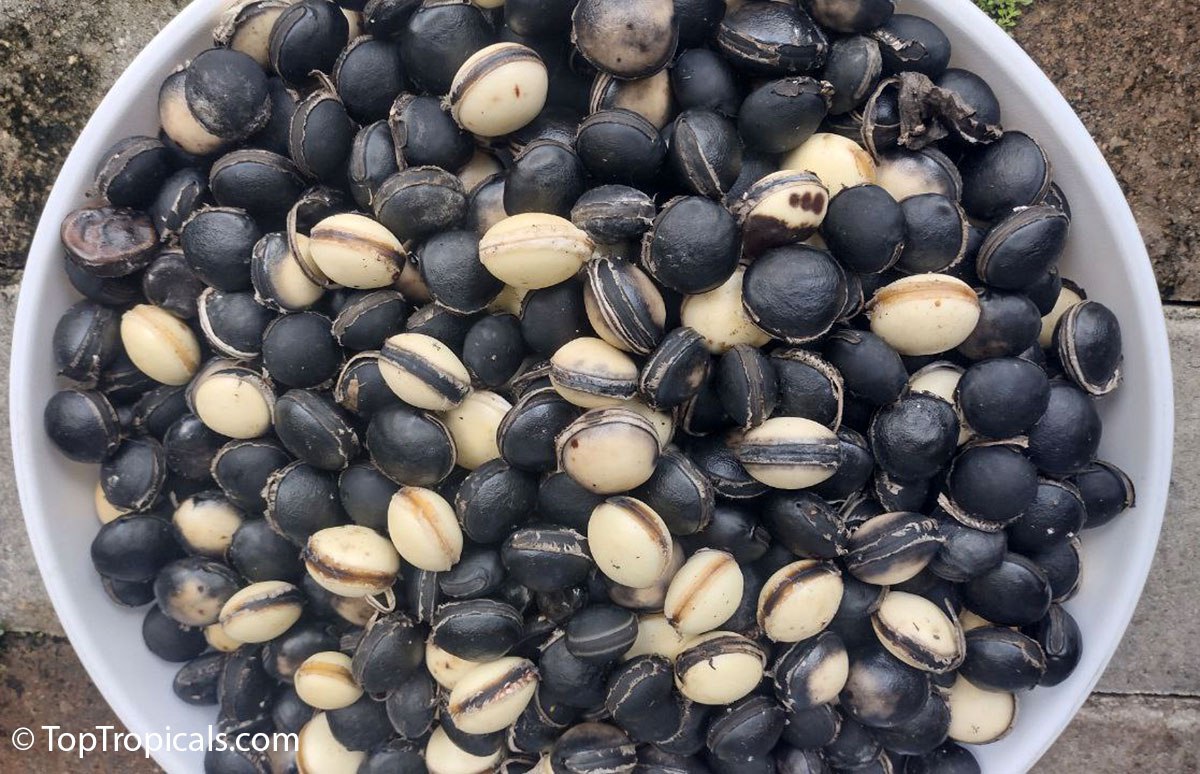
Mucuna pruriens, Velvet Bean, Purple Jade Vine - seeds
- 😼 Looking for a caffeine-free coffee substitute with health-boosting benefits?
- 😼 With its natural L-Dopa content, it supports brain function, calms the mind, and nourishes the body. Paired with ingredients like chicory root, this blend not only tastes great but also promotes digestion and overall well-being.
Mucuna pruriens, also known as Velvet Bean, or Purple Jade Vine, offers a rich and satisfying alternative to traditional coffee.
💬 Simple guide to making your own Mucuna "Nescafe" at home
- Prepare the Beans: Collect Mucuna beans carefully, wearing gloves to avoid contact with the irritating hairs on the pods.
- Roast the Beans: Roast the beans until they turn dark and aromatic, similar to how coffee beans are roasted.
- Grind the Beans: Once roasted, grind the beans into a fine powder using a coffee grinder or blender.
- Brew: Use the ground beans just like instant coffee. Add hot water, mix, and enjoy. You can add milk or sweetener if desired.
Benefits of Mucuna Nescafe:
- 🟡 Natural source of L-Dopa, which supports brain and nervous system health.
- 🟡 May calm the mind, nourish tissues, and support kidney function.
- 🟡 Aids digestion and acts as a prebiotic.
- 🟡 A caffeine-free alternative that provides sustained energy and balance.
📚 Learn more from previous post:
What is Nescafe Coffee made from?
🛒 Plant your own Nescafe Vine
#Food_Forest #Remedies #Recipes
🔴 Join 👉 TopTropicals

